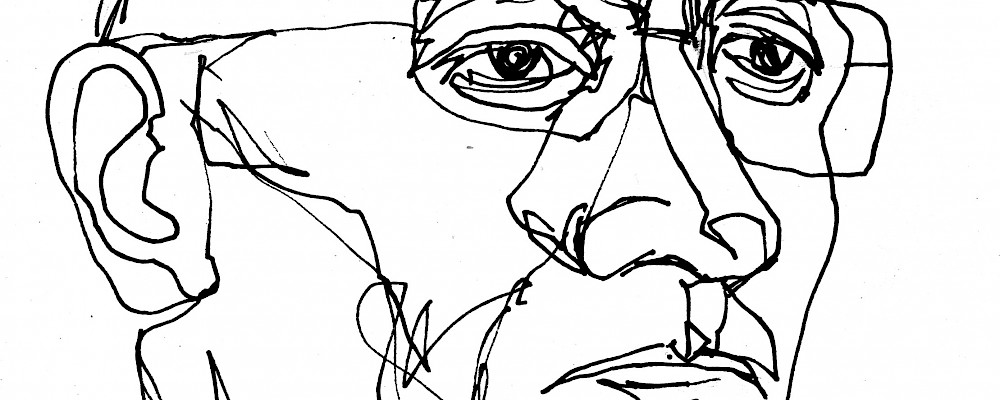A Risk Assessment on COVID-19
«Risk makes its appearance on the world stage when God leaves it. Risk presuppose human decision», the statement by the German sociologist Ulrich Beck (2008) makes us aware that it is the shift from providence to the responsibility of our decisions, which now defines our daily and social life.

Nowadays, the concept of risk is connected to decision making, drawing probabilities, and anticipating loss and profit (Gigerenzer et al. 1989). Beck (2008) describes this circumstance as follows: «Being at risk is the way of being and ruling in the world of modernity; being at global risk is the human condition at the beginning of the twenty-first century»: we find ourselves in a moment of cosmopolitan risk, in which these (risks) transgress national and regional boundaries, in which it is impossible to be excluded from the far and distant other.
Taking into consideration this contemporary “human condition”, the COVID-19 (known as Coronavirus) outbreak is an example of a risk issue that is universally relevant. Declared a pandemic by the World Health Organization on the 11th of March 2020, it affects 164 countries and territories worldwide (cf. WHO). Therefore also the actors might not share the same understanding of the topic. Mary Douglas, a British social anthropologist concentrated on the social implications of one’s individual perception of risk postulating four possible types of ways of life, grounding on the individual’s social structures that mirror their relationships to risk (Grid-Group Theory). Social groups defined by Douglas are for instance egalitarian (low-grid and high-group) or fatalist (high-grid and low-group). Those two positions perceive risks in an opposite way: while the egalitarian aims to maintain equality through the individual and to avoid the distribution of benefits through cooperation between individuals, fatalists consider risk management as futile, thinking that anticipating future events is in principle impossible.
This theory of the behavior of social groups partly explains why the containment of COVID-19 is so difficult to manage, as it is highly dependent on each individual’s decision making. «All countries can still change the course of this pandemic», as the WHO Director-General puts it, and that depends on something that each of us needs to do as an individual. Since the beginning of the COVID-19 outbreak, the individual is being advised to actively participate in physical distancing in the hopes of flattening the curve of this disease.
When a country is put in this unusual state of emergency, we as social beings are left by ourselves dealing with our biggest enemy – social proximity. The global requirements to fight off this pandemic makes sense from a clinical perspective – but also bears new challenges, such as psychological implications of isolation. Despite having to cope with isolation by finding time to do what we love, we still have the “social” duty to be concerned with other things, e.g. showing compassion towards our fellow citizens whilst also dealing with global problems (global warming, mass migration, nuclear armament, etc.).
In this new frame of reality, how we perceive and evaluate a risky situation is suddenly defined on a multitude of new factors, including massive dependence towards technology that influences our social digital environment and the cost of being alone. Loneliness imposed by an official mandate creates anxiety in social interactions, which psychologists call intergroup anxiety (Stephan/Stephan 2017). Perception of threats or risks can lead to negative emotional and physiological reactions, negative attitudes, and intercultural biases, and possible unconcealed hostile behavior. We might be physically “reducing” our space – shifting our social frame of reality – to fight off a biological pathogen. But could this not potentially create new psychological and therefore political pathogens? (Ries, 2020).
Literature
Beck, Ulrich. Risk Society’s Cosmopolitan Moment. Harvard University. 12 Nov. 2008.
Data provided by the World Health Organisation (WHO).
Ries, Marc. Re: Theorie Arbeit Beatrice Bianchini – Risk semantics in modern Society Update. Message to Beatrice Bianchini. 17 March 2020. E-Mail.
More articles in this category

Die Rolle eines Autors im Text. Von Italo Calvino zu Gilles Deleuze
Der Artikel wirft die Frage nach der Rolle des Autors für seine Texte auf. Gibt es ein Machtverhältnis zwischen einem Autor und seinem Text oder ist der Verfasser, wie bei Roland Barthes, „tot“. Wen kümmert es, wer spricht - dies ist hier die Frage.

Plädoyer für einen behutsamen Umgang mit Identitäten und Herkünften
In meinem Text setze ich mich für einen friedlich-freundschaftlich-solidarischen Umgang mit „Identität“ und „Herkunft“ ein. Letztlich plädiere ich diesbezüglich für zutiefst empathische Behutsamkeit. Bis das benannte Ziel der Behutsamkeit erreicht ist, schlängle ich mit jeweils unterschiedlichen Gefühlen durch ein facettenreiches Mosaik aus Literatur, Alltagskommunikation, Berufswelt, Sport, Musik und Mode, Film- und Fernsehen sowie durch ein Benjamin Blümchen-Hörspiel.

Die Zauberberge im 21. Jahrhundert
Was haben das World Economic Forum in Davos und das größte Yoga-Seminarhaus und Ashram in Bad Meinberg gemeinsam? Auf den ersten Blick: nicht viel. Doch auf den zweiten Blick erkennt man individuelle und gesellschaftliche Muster, die beiden zugrunde liegen.